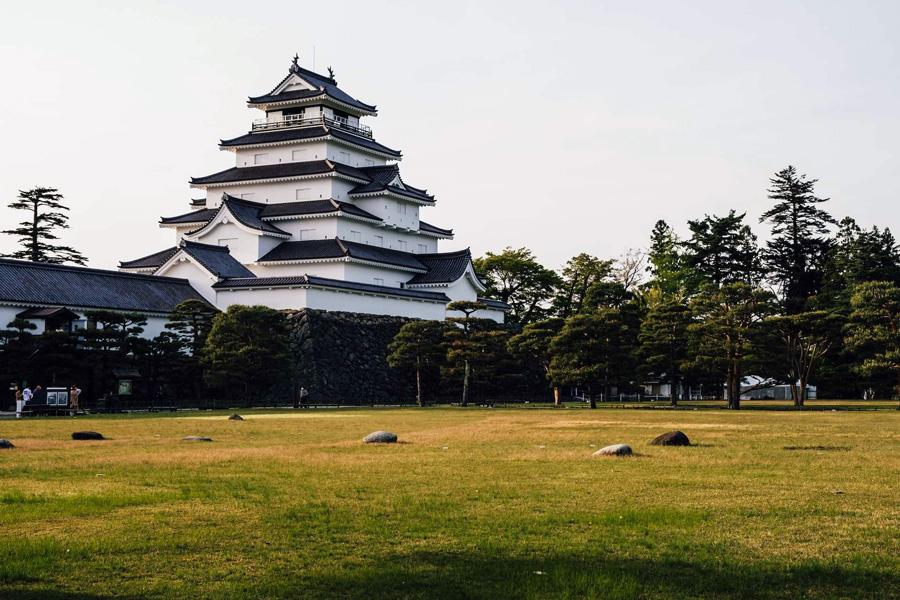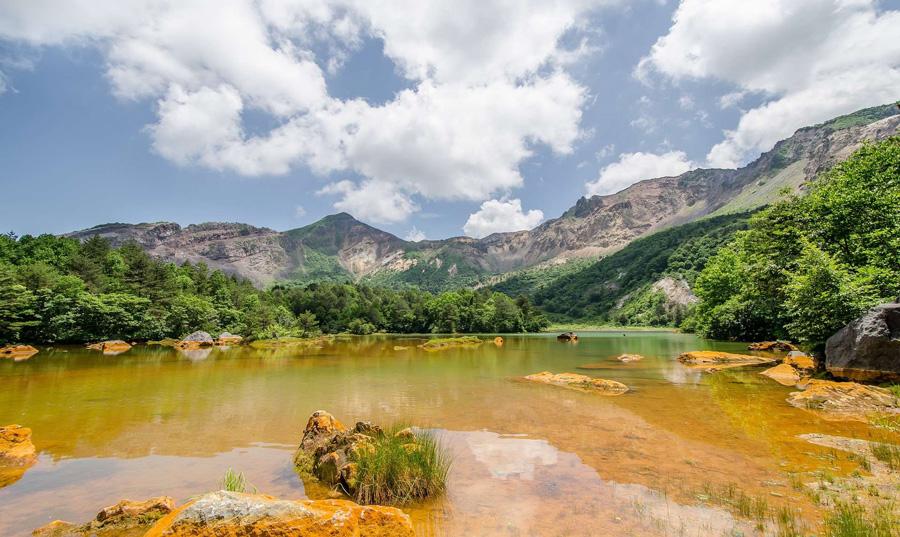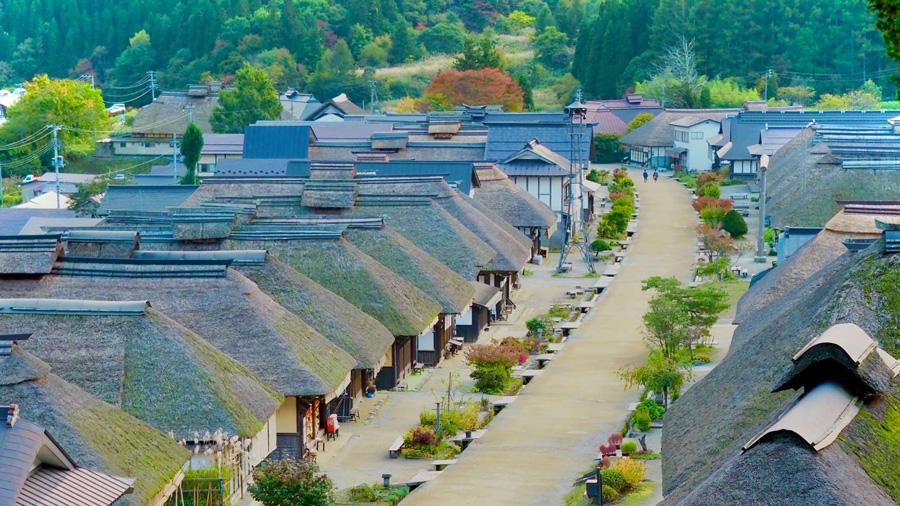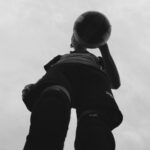Better by car
“Let’s take a trip to Fukushima Prefecture”, is not a phrase you hear very often. According to Statista, in the first few months of 2020 (just before the pandemic) only 0.6% of overseas tourists visited the prefecture. This is a real shame as the prefecture which sits just about an hour and a half from Tokyo by bullet train (Shinkansen), is home to a wealth of fantastic locations, scenery, sightseeing opportunities and activities, and why a trip to Fukushima Prefecture should be a consideration for your next trip to Japan.
While travelling around the country is usually best done by Japan’s faultless train service and the highly useful JR pass; there is another mode of transportation that is better suited for experiencing everything that Fukushima has to offer — the humble car.
Renting a car in Japan will allow you to explore far beyond the boundaries of the major city hubs. Where amongst the winding roads, mountainous ascensions, and lakeview scenery (which themselves are a big attraction) are some real hidden treasures that aren’t simply possible to visit when travelling by the rail network.
Let me explain how to rent a car in Japan and why Fukushima Prefecture is a fantastic place for a Japanese road trip.
The highs of Fukushima Prefecture
A host of exciting cities
Fukushima prefecture is the third largest in all of Japan, and across its near five and a half square miles of land are no less than 13 distinct cities. (My proposed road trip will take you through seven of them.)
No matter which one you find yourself in, there won’t be a lack of things to see and do; whether it’s the historical city of Aizuwakamatsu, the dynamic coastal city of Iwaki, or the rural splendour of Shirakawa; they all offer a different atmosphere with unique surroundings.
It’s worth exploring each one to visit their unique landmarks, trying the local cuisine, and getting a feel for its character, and that’s above all the usual amenities and attractions like gardens and museums, spas and shopping opportunities that most offer.

Landscape and scenery
Here is what makes a Fukushima road trip so appealing; Fukushima Prefecture consists of, and sits among, numerous mountain ranges, vast lakes and forested hillsides.
To the north lies some of the prefecture’s highest peaks in the form of Mount Bandai and Azuma-kofuji, both of which are classed as active volcanoes. Around them are some spectacular lakes which you can and need to explore; together they form some spectacular natural scenery that are among the best in Japan. The Bandai-Azumi skyline as such has been named one of the top 100 roads in Japan. (just don’t go there in the winter months.)
Further south also has its fair share of mountainous terrain which the roads constantly wind between, and their forested coverings will never cease to amaze no matter what season you arrive in.
The brilliant thing is that most of these locations and spectacles — if not all of them — have designated hiking routes and trails; observation points; or camping grounds to allow you to fully experience their beauty — and only a car can get you to these.

Cultural activities and sights
Beyond just exploring the cities and landscape of Fukushima Prefecture; there is so much more waiting to be discovered.
Due to the presence of several volcanoes in the area there are a wealth of onsens spread across its expanse. Higashiyama Onsen of Aizuwakamatsu and Takayu Onsen Tamagoyu just outside Fukushima City are two of the best but there are plenty others to try out.
There’s also the famous spot of Ouchi-Juku, the brilliantly preserved Edo period town that will send you back 400 years. It’s also here where you can find some negi-soba — soba that is served with a leek rather than cutlery.
There are also no less than four standing Japanese castles, countless shrines and temples, and a 1000 year old cherry tree.

Being able to drive in Japan, as well as the process of renting a car, is fairly straightforward. However there are a few requirements and procedures that you need to be aware of, primarily the fact that owning a driving licence in your home country is not enough for rental companies to lend you a vehicle.
Before arriving
There are a few steps that you must take before arriving in Japan to ensure that you are eligible to rent a car.
Unless you already own a full Japanese driving licence; in order to drive in Japan, you are going to need an international driving permit (IDP). The key thing to know about an IDP is that you cannot acquire one in Japan, so you must apply for one before arriving in the country. Alongside that you have to get the right IDP. Despite all this, it’s actually quite easy to get hold of the right one.
First things first, there are three kinds of IDP: 1926, 1949, and 1968.
Japan requires the International driving permit 1949.
Applying for one can vary by country: in the UK you can apply for one by visiting a Post Office, or in America by visiting the American Automobile Association (AAA) for example. In most cases you need to apply several months in advance.
If your home country is among France, Germany, Switzerland, Belgium, Monaco or Taiwan, then things are a little different. You will have to apply for a Japanese translation of your own drivers licence through the Japan Automobile Federation.
After arriving
Once you have your IDP the rental car option is now open to you. There are tons of rental car companies in Japan that can offer very reasonable prices even if you are renting for several days to a week. A few good options to check out are Nippon rent-a-car, Toyota rent-a-car, and Rentalcars.com.
Now there is a bit of a choice to make if you decide on a Fukushima road trip.
You could either:
Take the Shinkansen straight to Fukushima city which takes about an hour and a half, and then pick up a rental car outside the station (which is where you will find a lot of car rental companies in Japan).
Or:
Rent a car from Tokyo and make it a real road trip by driving all the way up to Fukushima Prefecture yourself. It will be much easier to rent a car in Tokyo due to the amount available, however, you would also have a three to four hour drive ahead of you to begin with.
Either way, there are some other things to bear in mind.
While most of the time you will probably want to return the car to the same place, you don’t actually have to do so. In Japan you can return the car to a different outlet (for a fee). Another factor is making sure that the car is fully fueled on return.
And that’s pretty much all you need to know about renting a car in Japan. (By the way, they drive on the left.)
Fukushima Prefecture route planner
Leg one

The first leg of my proposed road trip will see you depart west from Fukushima City heading for the Bandai-Azuma Skyline. This mountainous roadway will see you climb to a height of 1,600 metres. Along the first part of the route you will find several onsens and numerous places to stop to gaze across the beautiful landscape.
Further on towards the peak of the climb, you will encounter a rest hub known as Jododaira. This is a great place for a short break, however, it is also a hub for those wishing to explore the area on foot. From here you have the opportunity to climb to the peak and peer into the crater of Mount Azuma-Kofuji which sits right next door, or you could you can go slightly further afield in the opposite direction towards Mount Issaikyo and the gorgeous Goshikunam Pond, locally known as The Witch’s Eye.
After finishing up here, we journey back down the remaining Bandai-Azuma Skyline towards what could be classed as Fukushima Prefecture’s lake district. The first one you’ll encounter is Lake Akimoto, nearby is another scenic point you’ll want to visit known as Nakatsugawa Valley. Beyond that is Lake Onogawa and Lake Hibara where we find the perfect place to stop for the night.
Unfortunately this route is only open from mid-April to mid-November and is closed for the winter. Although there is an alternate route.
Leg one alternate route

Starting from the same location, instead of going up towards Mount Azuma-Kofuji, you can take a south-westerly direction through more reliable roadways. But let’s be clear here, this route has some scenic views of its own as well as numerous attractions you’ll want to stop off at.
First you will want to make a stop at a small onsen village centred around Tsuchiyu Onsen. This spot, nestled by comforting hillsides and converging rivers, hosts numerous onsens and ryokans, and a pleasant atmosphere in which to spend a short while. Continuing south-west you’ll encounter more scenic views of looming mountains as well as a host of ski resorts.
There is also an opportunity for exploration on this route too with a hiking trail through imposing valleys, culminating in and ascent of Mount Adatara.
After this it’s full steam ahead rounding north to Lake Hibara where you can spend the night.
Leg two

After a bit of a drive on leg one, this time we’re heading off a short distance west to the city of Kitakata and the adjacent city of Aizuwakamatsu. You’ll want to spend at least a day around this area due to the amount of things to see and do — if not more.
Kitakata ramen is one of the three most popular forms of the dish in Japan and certainly worth a try. Kitakata has the highest number of ramen shops per capita in the country but the shop Genraiken is where it all began for this local favourite.
Slightly further south is Aizuwakamatsu, here you will want to explore the Sazae Temple; Tsuruga-jo, also known as Aizuwakamatsu’s Castle; Nisshinkan, a rebuilt samurai school; Aizumura; and a host of local and prefectural museums — as well as more opportunities for onsens fanatics,
If you manage to do all that, you should take time to visit Lake Inawashiro which is very close by, and If you haven’t had enough of mountains and volcanoes yet, Mount Bandai rests very close in the north-east too.
Okay so most likely more than one day here I think.
Leg three

Leg three of the trip will see you head south out of Aizuwakamatsu towards the Ouchi Dam. Following a quick stop there to observe the landscape; the village of Ouchi-Juku is waiting just a bit further.
This is a famous tourist spot known for its Edo period style buildings and atmosphere and one of the only places where you can try Negi-Soba — eating soba noodles with a leek as a utensil. While fairly small, make sure to spend time exploring it all, including the local shinto shrine and the observation point overlooking the village.
Moving on east to join the main road going south, we head towards the town of Shimogo. Here a stop at To-no-Hetsuri, a scenic walk along the cliffs and a bridge over the Aga river is worth a look.
Continuing on we find the main road south-east heading towards the next stop-off location of Shirakawa city. Along the route close to the mountain range known as Sabonyaridake are a couple of places to take note of. First off is the Kannon-numa forest park which is a nature reserve, secondly is the Yukiwari bridge that boasts spectacular views over the Abukuma river and the deep valleys around it.
After this the city of Shirakawa is very close by.
Leg four

It’s worth spending a little time in Shirakawa city as it’s home to another major castle location as well as spots such as Nanko Park.
When you’re finished, head out east of the city. This leg of the road trip is where you’ll begin to travel amongst flatter landscapes and be continually closer to civilization. This means you may be more inclined to explore locations as you spot them, as there will be many roads and locations to do just that.
Some worthwhile locations to visit are the Yatuki Tsutsukowake shrine and Yamamoto Fudoson, both of which are close together south of the pass-through town of Tangura.
Beyond that, this leg is about enjoying the drive to the next destination of Iwaki City. This is the most populated city in Fukushima Prefecture.
Leg five

This is very much the start of the city stage of the road trip but don’t think for a second that a car becomes redundant. Iwaki City is still very much a place where you need a set of wheels to get around.
Part of the difference between Iwaki and other cities in Fukushima prefecture is the access to sea front views. Make the most of it with trips to the Shioyazaki lighthouse, or the Iwaki marine tower that overlooks the pacific ocean. The whole pacific theme continues within Iwaki with the popular Hawaiians Spa Resort set up to the west.
A little way out to the north-west there is even a Moto Sports Land for those seeking a bit of adventure. This consists of a small motocross circuit with motorcycle rental. This direction sets us up for a short journey to the next city of the route — Koriyama.
Leg Six

Koriyama is the largest city in Fukushima Prefecture and so you may want to spend a couple of days exploring this beautiful city before moving on. Unlike Iwaki, Koriyama is much less spread out and more of an urban sprawl.
There is a lot to keep you occupied; parks and green spaces are plentiful such as Kaiseizan Park and the 21st Century Memorial Park; museums of varying kinds; and many different kinds of independent eateries ranging from ramen, Yakiniku, and pastries which seem to be popular here.
Going a little bit further afield, be sure to visit Miharu Takizakura which is the 1000 year old Cherry tree I mentioned earlier, and Goreibitsu Pass which is a short climbing route to the west of the city.
The last thing to do when you’ve finished experiencing everything Koriyama has to offer is take the short trip north back to the starting point of Fukushima City.
Final Destination
We’ve finally made it back to Fukushima City where we started the roadtrip. Take a day or two to enjoy everything that this prefectural capital has as there’s a fair bit.
Relax at the onsen districts in the north, indulge in the nightlife in the district of Okitamacho; there are even arcade amusements centres and a horse racing track if that’s your thing.
Keep the car handy until the last minute too, as you’ll be needing it to travel to the outskirts in order to visit some wonderful spots such as Daishoji Temple. Fukushima Prefecture is also known for the quality of its fruits and is often called the ‘Fruit Kingdom’; to the north of the city you can visit a great number of orchards for some fruit tasting.
Be sure to visit the Mount Shinobu Observation Decks that are located in the central part of the city. They provide great views across the city without having to ascend too high, and are a great place to celebrate the journey you’ve just completed.















































